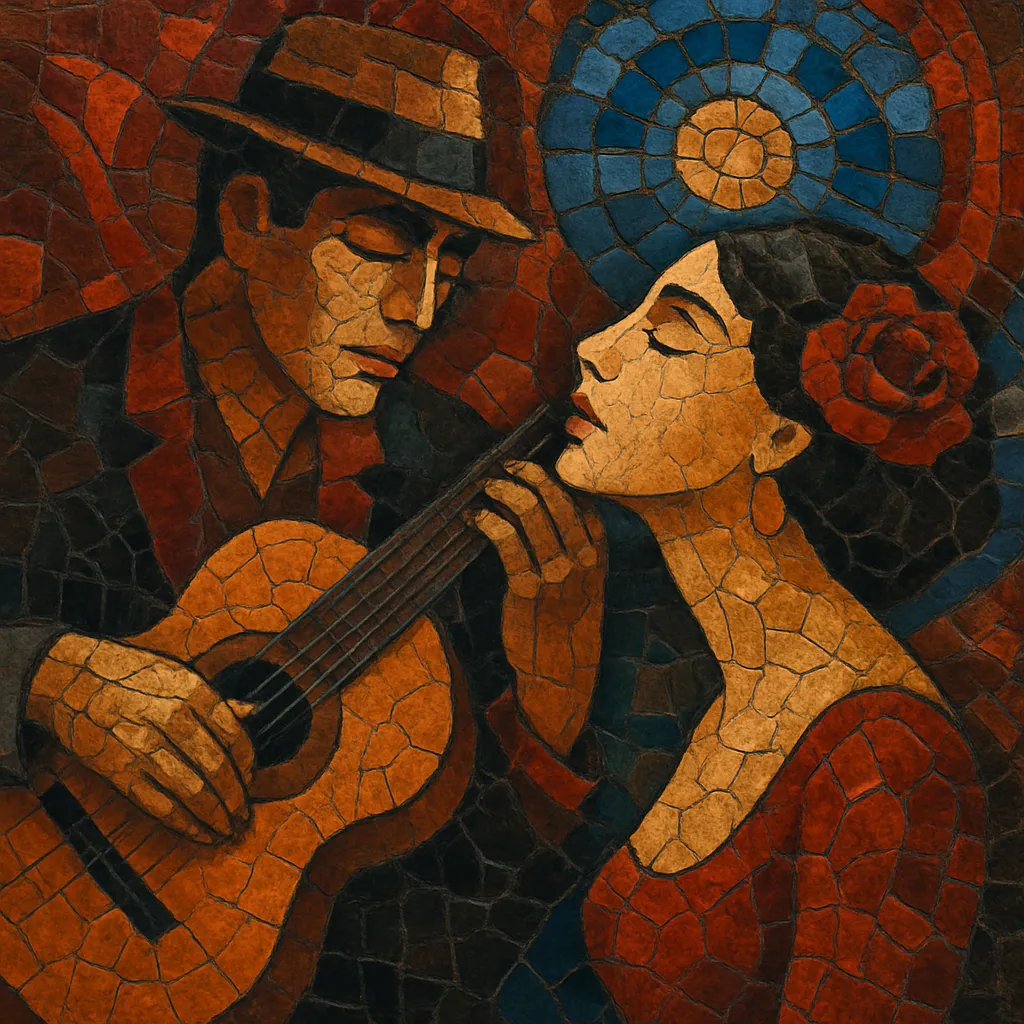Bolero is a romantic Cuban song genre that emerged in the late 19th century in Santiago de Cuba within the trovador tradition. It is characterized by a slow to moderate tempo, lyrical melodies, and intimate, sentimental lyrics centered on love, longing, and heartbreak.
Unlike the Spanish dance of the same name, the Cuban bolero is a vocal, guitar-led form that later expanded to trios and orchestras. Its rhythmic backbone often draws on the habanera/tresillo feel, while harmony ranges from simple tonic–dominant motion to lush progressions with secondary dominants and jazz-inflected extensions in later styles.
Bolero became a pan–Latin American idiom during the 20th century, shaping the repertoire of trios románticos and crossover stylings in Mexico, Puerto Rico, and beyond, and laying crucial foundations for later romantic currents in Latin pop and ballad traditions.
The Cuban bolero arose in Santiago de Cuba in the late 19th century among trovadores who accompanied themselves on guitar. José “Pepe” Sánchez is widely credited with composing the first recognized bolero, “Tristezas,” in 1883. Early exponents such as Sindo Garay, Manuel Corona, and María Teresa Vera helped codify the song form’s lyrical intimacy, melodic contour, and flexible habanera-influenced rhythm.
During the first half of the 20th century, bolero traveled throughout the Caribbean and Latin America. In Mexico and Puerto Rico it flourished through the trio romántico format—two harmony voices with guitars and a requinto for melodic interludes. Groups such as Trío Matamoros and, later, Trío Los Panchos popularized the style across radio and records, standardizing the romantic repertoire and performance practice.
The mid-century “golden age” produced iconic interpreters and composers: Agustín Lara in Mexico, Olga Guillot and Antonio Machín from Cuba, and Lucho Gatica in Chile. Bolero hybridized with other Cuban and Caribbean idioms, creating offshoots like bolero-son and orchestral boleros suited to large dance bands. The closely related Cuban filin movement infused jazz harmonies, extended chords, and crooner-style delivery, enriching bolero’s harmonic palette.
Though challenged by rock, salsa, and pop, bolero’s DNA persisted in Latin ballad (balada), bachata, and later salsa romántica. Periodic revivals—most famously in the 1990s through high-profile recordings of classic boleros—reintroduced the repertoire to new audiences. Today, bolero remains a living tradition in Latin America, a touchstone of romantic expression, and a core influence on contemporary Latin pop’s balladic sensibility.


